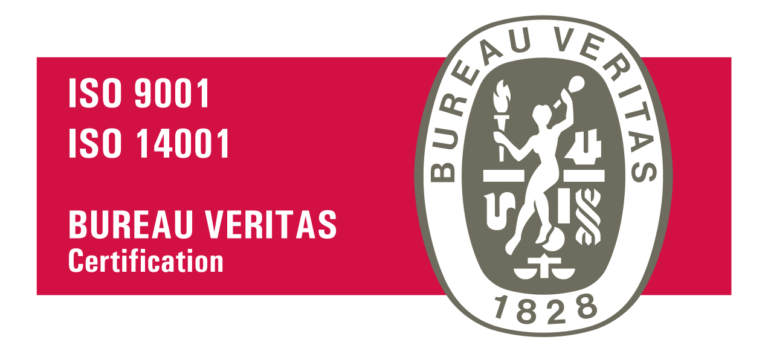

Reach us here
Philippine Allied Enterprises Corporation
Philippine Allied Enterprises Corporation, the exclusive distributor of Bridgestone Tires in the Philippines, is dedicated to safeguarding the personal data you provide to us. This Privacy Policy elucidates how we gather, utilize, share (to the extent necessary), and safeguard your personal information. By utilizing our website, you agree to the terms delineated in this policy for the specific purpose for which the information was collected: to transmit requested content, respond to inquiries or questions, schedule meetings and product demonstrations, or register for events and activities.
It’s important to replace worn tires for a smooth and safe ride. Good traction is vital for handling your car well. Change your tires when the tread depth is 2/32 of an inch or less, or if you see cracks, bulges, or uneven wear. Visit a Bridgestone Dealer for a free tire inspection for more details.
While uniform tread wear across the whole tire is common, irregular tread wear may indicate improper tire inflation, misaligned wheels, or other issues. Get your car inspected by a trained mechanic if you see uneven tread wear. The tread depths of new tires range from 7 to 9 millimeters, although some truck and SUV tires may have deeper tread depths than other types. As a result, it’s critical to keep your tires’ tread depth at least 1.6 mm.
TREAD DEPTH GAUGE: Using a tread depth gauge is an easy way to determine the tread depth of your tires.
TREAD WEAR INDICATOR BARS: Your tires themselves already include another sign of worn tread. Indicator bars, also known as wear bars, are inserted 1.6 mm into the tread ribs of every type of tire. They are there to assist you in determining when to change your tires and to keep an eye on the tread depth. Verify that the indicator bars and tread are flush. It’s time to change the tire if they are.
Different cars have different tire pressure recommendations. Check your owner’s manual or the label on the driver’s side door jamb, inside the fuel door, or in the glove compartment for the correct pressure. Following these recommendations ensures safety, fuel economy, and optimal performance. Visit a Bridgestone Dealer for a free tire inspection for more information.
You should check your tire pressure regularly, ideally once a month. Also, check it before long trips, especially if carrying heavy loads or towing trailers. Regular checks ensure safe driving, maximum fuel efficiency, and longer tire life by keeping your tires properly inflated.
Start with Cold Tires: Ensure your tires are cold (parked for 3+ hours or driven less than 1.6 km) for accurate PSI readings.
Find Recommended PSI: Check the driver’s side door jamb or the owner’s manual for the recommended PSI for your front and rear tires.
Note PSI Levels: Write down the correct PSI for each tire if they differ.
Check Tire Pressure: Remove the valve cap, place the pressure gauge on the valve stem, and press until the ‘hiss’ stops to get a reading. Record the readings for all four tires.
Fill to Recommended PSI: Use an air compressor to inflate tires to the recommended PSI. If using a compressor at a petrol station, add 4 PSI to the recommended level if tires are hot, then recheck when cold.
Check Monthly: Regularly check your tire pressure monthly to maintain optimal PSI.
If you feel disturbances or observe your steering wheel shaking, it’s time to rebalance your tires. Unbalanced tires can cause your car to shake, resulting in premature tire wear, driver fatigue, and suspension damage.
Tire balancing is essential for safe and comfortable driving, as well as keeping your vehicle and tires in good condition. When done correctly, balanced tires rotate smoothly, reducing vibrations and extending tire life. Additionally, balanced tires save fuel and improve overall driving performance.
Generally, it’s best to replace your tires with the same size as your current ones to ensure compatibility and maintain optimal performance, handling, and safety.
However, there are some situations where different-sized tires might be considered:
Performance Upgrades: Choosing a different size or aspect ratio can improve your car’s performance based on your driving style.
Personalization: Some drivers opt for different sizes or designs for aesthetic reasons.
Before switching to different-sized tires, check compatibility and safety with an expert or follow your car manufacturer’s guidelines. This ensures your car’s handling, performance, and safety are preserved.
Tire rotation is critical for maintaining even tire wear and increasing tire life. Here’s how and when to rotate your tires.
1. Rotation Patterns: The most typical pattern is the “cross” rotation, in which tires are rotated diagonally across the vehicle. The front tires go straight back. The right pattern may vary based on tire type and drivetrain (front-wheel drive, rear-wheel drive, or all-wheel drive).
2. Rotate your tires every 6,000 to 8,000 miles (9,600 to 12,800 kilometers), or once every six months, whichever comes first. For detailed suggestions, refer to your owner’s handbook or the instructions provided by the tire manufacturer.
3. Uneven Wear: Look for symptoms unusual wear patterns. If you see any of these indicators, rotate your tires as soon as possible to prevent additional uneven wear and retain performance.
4. Professional Service: While you can rotate your own tires if you’re confident, many vehicle repair shops and tire service facilities provide this service. They guarantee that your car’s tires are rotated appropriately according to the approved pattern.
Follow these rules and rotate your tires on a regular basis to guarantee even wear, improve tire life, and maintain maximum handling and performance.
Proper tire pressure is crucial for maintaining control of your vehicle. It ensures your tires have enough grip on the road and distributes the vehicle’s weight evenly, preventing uneven wear and extending tire life. Underinflated tires increase rolling resistance, reducing fuel efficiency and increasing fuel consumption. Regularly checking and maintaining correct tire pressure is essential for safe driving, longer tire life, and optimal vehicle performance.
Never exceed the maximum vehicle load capacity shown on the tire placard or the weight-carrying limits on the tire sidewalls, whichever is lower. Overloading can cause the tires to overheat and increase the risk of failure.
The total weight your tires can carry depends on the number of tires, weight distribution, and proper loading according to your vehicle’s design specifications.
If unsure about your tires’ load capacity, consult your owner’s manual or visit a Bridgestone Dealership for guidance.
You may learn vital information about your tire’s size, type, load capacity, and speed rating by reading the sidewall. The following is a condensed guide to sidewall reading:
1. Tire Size: The tire size is typically displayed in a format like this: 215/65R15. Here’s what each part means:
– “215” represents the tire width in millimeters.
– “65” is the aspect ratio, which is the ratio of the tire’s height to its width.
– “R” indicates the tire is of radial construction.
– “15” is the diameter of the wheel rim in inches.
2. Speed rating and load index are typically displayed combined, with the load index coming first. The maximum load the tire is designed to take is indicated by the load index. On the other hand, the speed rating indicates the highest speed the tire is safe to handle.
3. This is a string of characters and numbers that indicates adherence to Department of Transportation regulations and offers details on the tire’s size, manufacturing date, and plant code.
If you’re unsure about any of the information or need assistance, consult your vehicle’s owner’s manual or go to the nearest Bridgestone Dealership for guidance.
By using Bridgestone’s Tire Selector, you can quickly identify the appropriate Bridgestone tires for the make and model of your car. Additionally, you may locate the closest dealer to buy new Bridgestone tires.
Your driving habits can significantly affect the life of your tires. Here are some ways in which driving habits can impact tire lifespan:
– Driving too fast wears tires faster because of extra friction and heat.
– Quick starts, hard stops, and sharp turns also wear out tires faster.
– Too much weight in the car can damage tires early.
– Tires wear unevenly if they’re not inflated correctly. Always keep them at the right pressure.
– Rough roads and off-roading can also damage tires, leading to punctures or cuts.
You may extend the life of your tires and guarantee safe driving conditions by adopting responsible driving practices, such as following speed limits, refraining from aggressive driving, and keeping your tires properly inflated. Extending tire life and preserving peak performance also need routine tire maintenance, which includes inspections and rotations.
When inspecting your tires, look for the following:
Tread Depth: Use a tread depth gauge or the penny test to measure the tread depth. Verify that the tread depth is adequate for safe driving and satisfies all regulatory criteria.
Examine the tread for evidence of excessive wear, bald areas, and irregular wear patterns. Incorrect tire inflation or alignment problems could be the cause of uneven wear.
Sidewall Condition: Look for any signs of damage, such as bulges, cuts, or cracks, on the sidewalls. Tire integrity and safety may be compromised by damaged sidewalls.
Tire Inflation: Use a tire pressure gauge to periodically check the pressure in your tires. Make sure every tire is inflated to the recommended level as indicated by the manufacturer of the vehicle.
Find the nearest Bridgestone and Firestone tire center with complete contact information from our nationwide list.
© 2023 All Rights Reserved, Philippine Allied Enterprises Corporation

The exclusive distributor of Bridgestone tires in the Philippines